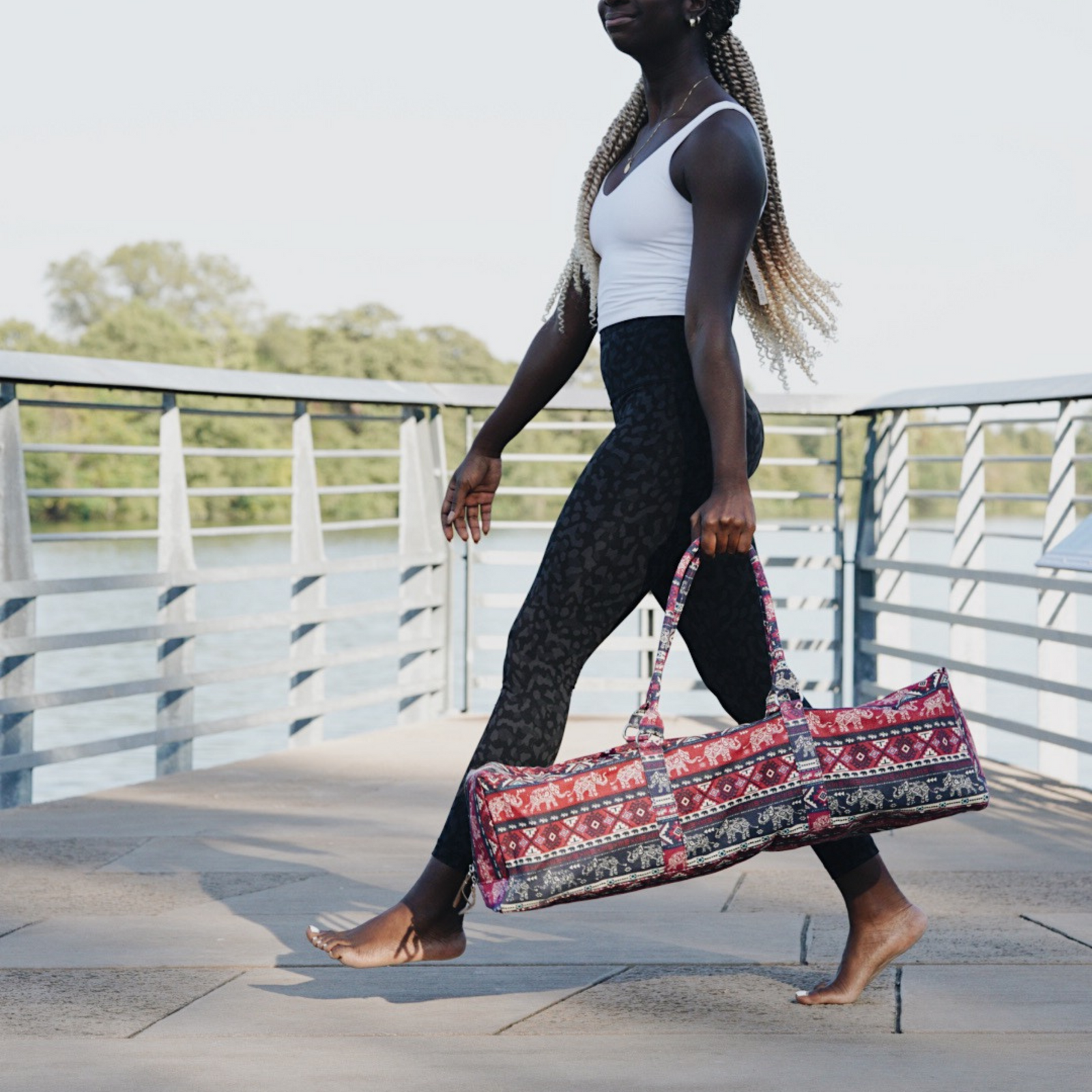I liked the regular size, but wanted a larger bag to carry more of my gear. The handles are an awkward length when the bag is loaded, too short to put over your shoulders. The low rating is more because I've been trying to return the bag, but the company has not responded.
Well-made, sturdy canvas material. It's big enough for my Lululemon mat AND yoga block. I only wish it had D rings on the ends so that I could add a shoulder strap.
I love my yoga bag. The colors are vibrant and has plenty of room inside for everyday necessities.


